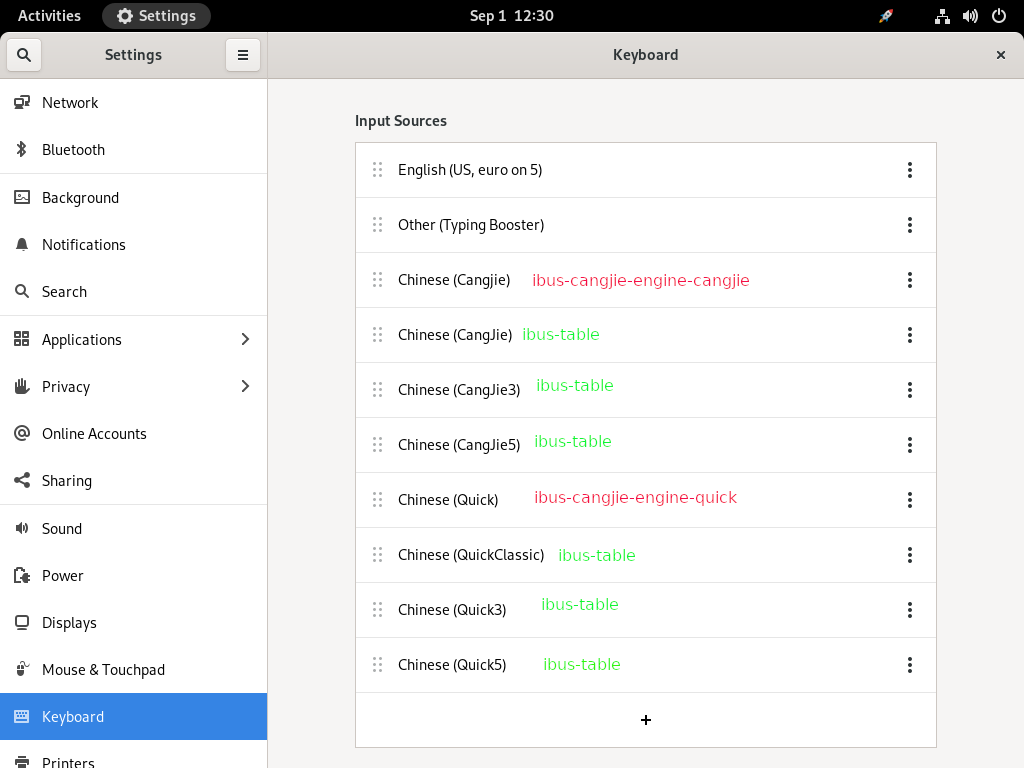Description
The feature covers the “Cangjie” and “Quick” engines from ibus-table to provide fast Chinese input for Hong Kong and Taiwan people.
Setup
⚠️ Warning: There are different implementations of Cangjie and Quick engines, those from ibus-table and those from ibus-cangjie. They are easily confused, so try to choose the right ones for this test.
- The Cangjie engines from ibus-cangjie are in the
ibus-cangjie-engine-cangjiepackage. - The Quick engines from ibus-cangjie are in the
ibus-cangjie-engine-quickpackage. - The Cangjie engines from ibus-table are in the
ibus-table-chinese-cangjiepackage. - The Quick engines from ibus-table are in the
ibus-table-chinese-quickpackage.
You can have all these packages installed at the same time, if you want, but then you have to be extra careful not to confuse them when selecting them for example in the Gnome Control Center. They look very similar there:
So make sure that the ibus-table-chinese-cangjie and ibus-table-chinese-quick packages are installed, restart your session, then follow the steps in QA:Testcase i18n input method setup to configure the input method on the desktop in general. And take extra care to choose the right ones in the Gnome Control Centre❗
You can double check whether you did select the right ones by clicking on the 3 vertical dots to the right of the input source and open the setup tool. The setup tool for ibus-table looks very different from the setup tool for ibus-cangjie.
How to test
Cangjie3:
- Input typed ➡️ result
mwyl␠➡️ 面
Cangjie5:
- Input typed ➡️ result
mwyl␠➡️ 一卜田中
Expected Results
All steps above completed successfully.

